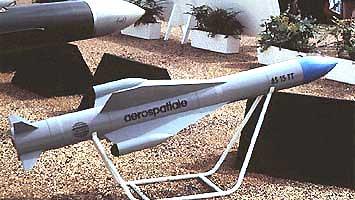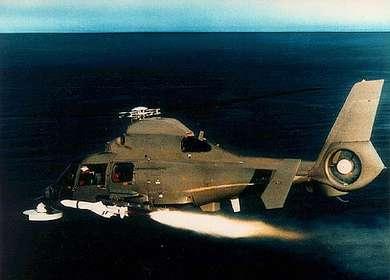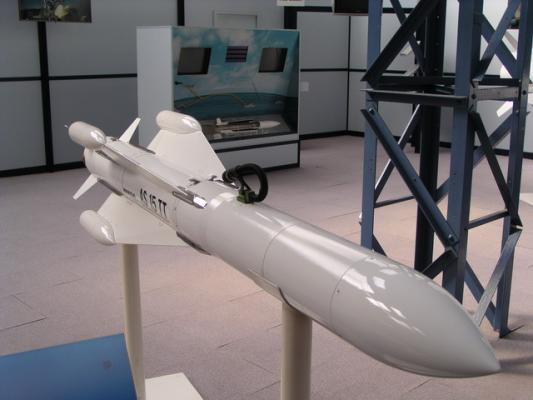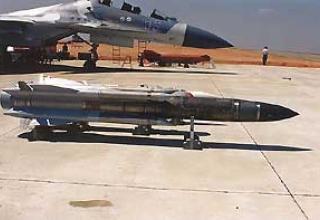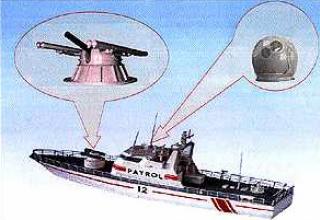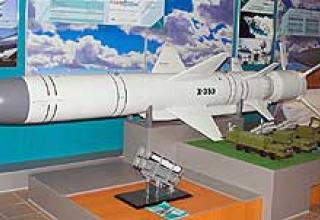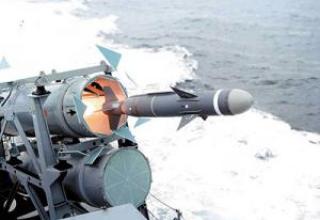The AS15TT is a light, anti-ship, all-weather close-range missile manufactured by Aerospatiale and is in service with the French Navy.
Carriers of missiles are helicopters such as "Dauphin 2", based on the ships. Missiles AS15TT can be installed on surface ships.
Mass production of the AS15TT missile began in 1984.
Composition:
The rocket has a normal aerodynamic pattern with a cross-shaped wing in the middle part of the hull and steering wheels on the surface of the tail compartment.
The main parts of the AS15TT missile:
- - a combat unit;
- - ground power and control plug-in;
- - starting accelerator;
- - power drive of the control surface;
- - nozzles;
- - antennas;
- - marshal engine;
- - equipment compartment (gyroscope, thermal battery, counting and solving device, radar sensor, altimeter);
- - safety-triggering device.
Target detection and guidance of the AS15TT is performed using the new, improved Aqrion 15 radar manufactured by Thomson-CSF. Missile guidance method is command by means of frequency-modulated radio commands.
The missile is launched outside the scope of the anti-aircraft capabilities of the targets to be hit. Immediately after launch, the missile performs a programme reduction. On the march section of the trajectory on board radio altimeter maintains a flight altitude of 5-6 meters. High resistance to radio reconnaissance and radio countermeasures is provided, firstly, by compression of the radar pulse and, secondly, by quick change of operating frequencies, which is made on the radar even at the pointing stage of the missile. Pulse compression of the radar leads to significant stability against interference from the sea surface and to high range resolution. A narrow horizontal directivity pattern allows the radar to achieve satisfactory azimuth resolution.
Thanks to these characteristics, the Aqrion 15 radar can detect small targets and may be suitable for search and rescue, as the radar can detect small boats, small shipwrecks, etc., even in storm conditions.
The Aqrion 15 radar is a dual-channel radar that can accompany a missile and a target simultaneously. The missile has a directional responder. In pointing mode, the radar measures the angular deviation of the missile from the line of sight of the radar to the target and the distance from the target. Based on this data, commands are generated and the coded pulses of the radar are transmitted to the missile, which is led in the direction of the target. In the vertical plane, the missile is automatically guided by its altimeter. The altitude of the flight is set before launch. The missile takes a low flight path at a low altitude as soon as it is launched. At the end of the flight, at a distance of 300 m from the target, the missile is further reduced to an altitude of 1-3 m for the best possible hit.
In addition to pointing the missile AS15TT radar Aqrion15 allows you to transfer data on detected targets through the modulator-demodulator MODEM to their surface ships, as well as transfer target data to the rocket "Exocet" AM-39 class "air-surface", which carries a helicopter. The AS15TT missile can be used together with the Exocet MM40 long-range missile.
The complete anti-ship system consists of an Exocet MM40 missile and one or two AS-365F "Dauphin 2" helicopters armed with four AS15TTT missiles each.
The AS15TT missile is also used to arm coastal batteries. This battery consists of two launchers (six missiles each) and one command post equipped with an Aqrion 15 radar.
Characteristics:
| Length, mm | 2300 |
| Largest transverse span, mm. | 564 |
| Maximum housing diameter, mm | 187 |
| Mass of the rocket, kg | 100 |
| Power plant | Starter and march engines |
| Range, km | 17 |
| Minimum launch height, m | 15 |
| Cruising speed km/h | 1000 |
| Guidance System | team |
| Weight of combat unit, kg | 30 |
Testing:
Despite the declared high effectiveness of HARM missiles of early modifications can not be considered a modern high-precision weapon because they do not have a full-fledged recognition system "insider". Thus, for example, during Operation Desert Storm, the U.S. Air Force could not always effectively use HARM missiles because the Iraqi air defense facilities, along with Soviet-made systems (against which the use of this type of missiles is calculated) included American Hawk systems.
Sources:
- "Техника и вооружение сухопутных войск капиталистических государств" 1984г. Выпуск 7.
